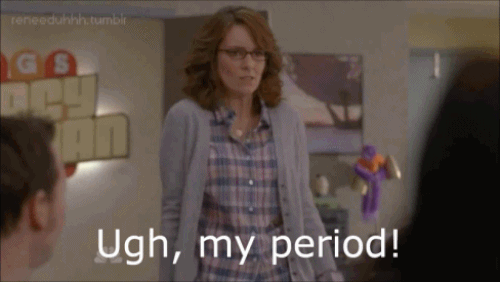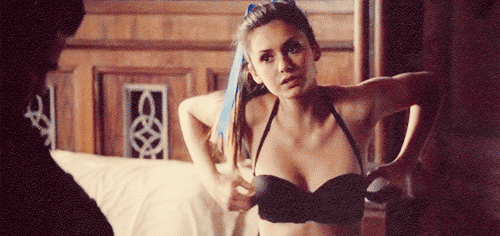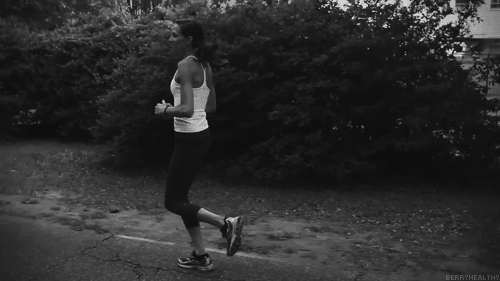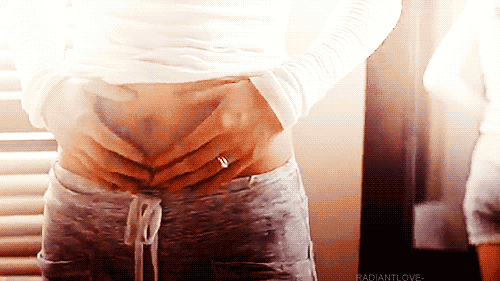6 Reasons Your Boobs Hurt All The Time (And How To Stop It)
It's probably not a cause for panic.
 instagram / @val.mercado
instagram / @val.mercado Between hormonal fluctuations and unsupportive bras, your boobs can end up feeling sore, swollen, and achy for a variety of reasons, and the problem is more common than you'd think. Breast pain—known as mastalgia, if you really want to get formal—may affect up to 70 percent of women in their lifetime, according to the Society of Obstetricians and Gynaecologists of Canada.
The good news is that it's rarely anything to fret over. But that still leaves you with tenderness or pain that's front and center (well, just right and/or left of center).
We asked Taraneh Shirazian, M.D., an obstetrician-gynecologist at NYU Langone Medical Center, to get to the bottom—err, top—of what causes a sore set and the best ways to ease the ache.
1. Your period is on its way.
Right before you get your period, breasts can feel swollen and tender. That's because your period heralds hormonal fluctuations that affect your breasts in two ways: Estrogen causes the ducts in your breasts to enlarge, while progesterone boosts the growth of your milk glands (good times!), which can make it feel as though your breasts are stretched to maximum capacity.
"If you're not on oral contraceptives and are just having natural cycles, usually anywhere from mid-cycle to the end of the cycle you'll have some amount of breast tenderness," explains Shirazian. "These are normal shifts in your hormonal levels."
Thankfully, period-related breast pain goes away once your period starts. In the meantime, wearing a well-fitted bra at night and taking an over-the-counter pain reliever can help. "Birth control pills are also a good treatment for cyclic breast pain," says Shirazian. "They keep hormone levels at a plateau so you don't feel the ups and downs of normal cycling, [preventing] pain."
2. You have fibrocystic breasts.
The name may sound a little scary, but fibrocystic breast are a common, benign condition, hallmarked by lumpy breasts that can feel swollen, tender, or painful. More than half of women experience fibrocystic breast changes at some point in their lives, according to the Mayo Clinic, though it's more common between ages 20 and 45.
There are several pain-relieving strategies at your disposal: Taking an over-the-counter pain reliever, applying heat to the area, and wearing a supportive bra all help ease the ache, according to the American Cancer Society. Some women find that cutting out caffeine and alcohol lessens the discomfort, notes Shirazian. Ditching salt, which causes fluid retention, can also reduce symptoms.
Although research is mixed, popping the supplement evening primrose oil may help reduce breast tenderness since it appears to act as a natural anti-inflammatory. The Cleveland Clinic suggests taking 1 gram three times a day, but check in with your health care provider before taking any supplement.
3. Your bra doesn't fit.
Wearing an unsupportive bra—whether you're working out or walking around on a daily basis—can cause trauma to the breast tissue, leading to aches and pains.
There are several signs that your bra isn't properly fitted: The bra is riding up in back, the shoulder straps and band are digging into your skin, your breasts are spilling out of the cups, and the underwire (if you have one) doesn't lay flat against your body.
If you're having any of these issues or are wondering whether you're wearing the right bra size, go to a professional bra fitter to get measured.
4. Your running regimen may be to blame.
Running doesn't just take its toll on your knees. It can also bring on breast discomfort. A 2013 study revealed that one in three female marathon runners report breast pain and that nearly 20 percent said it affected their ability to exercise.
A surprising number of the female marathon runners (44 percent) lived with the chest soreness without doing anything to relieve symptoms. For the runners who did try to ease the ache, they turned to pain medication and a supportive sports bra—both of which can help.
5. Or you may be sore from working out.
Soreness from exercising can make you feel as though your breasts hurt when it's actually the muscle behind your set that's the source. "Upper body exercises, such as bilateral weights or push-ups, can strain the muscles of the chest wall," says Shirazian. "Sometimes what people think of as breast pain might actually be muscular pain."
The soreness should subside with rest, an over-the-counter pain reliever, and stretching the area.
6. You're pregnant.
Swollen, achy breasts are one of the first telltale signs of pregnancy. If you're of reproductive age and are not on birth control or haven't been using your birth control method correctly and consistently every time, it shouldn't come as a surprise that you might get pregnant. "If you have bilateral [both breasts] breast pain, coupled with missing a period or not having had period for a few months, you absolutely should consider pregnancy," says Shirazian.
That said, if you have breast discomfort that isn't cyclical—meaning, you've been paying attention and it doesn't come and go over the course of your menstrual cycle—or if you feel a lump or have skin changes on the breast, make an appointment with your health care provider right away. It's unlikely that there's anything to worry about, but better safe than sorry.
And before you start thinking the "C" word, know this: "Breast cancer doesn't typically present as pain or pain in both breasts," reassures Shirazian. "If you feel a lump, it might be a cyst that needs further evaluation. Keep an eye on it through one cycle and see if it goes away. If it does, you know that it's hormonal. If it doesn't go away, have it checked out."






